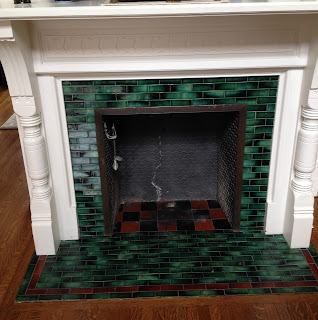Masonry Fireplace Inspection


Many real estate listings when describing the fireplace put an acronym: NRTC (Not Represented To Code). The reason for this is that wood burning fireplaces are not technically “grandfathered” in many areas. So if a chimney or other fire occurs, it may not be covered by insurance. Some home inspectors are certified for fireplace inspections. Many are not, however I am always asked by my clients; “can I burn wood in it?” I know many home inspectors inform their client that the fireplace inspection is based on “component” condition, not on functionality. Although this is the correct answer, it does not answer the question they asked. There are things we can look for that will indicate if the unit should be safe for operation. Even if this is the case, if your client is planning on using the fireplace for wood burning, it would be advantageous for them to get something in writing from a certified fireplace inspector. This documentation may be necessary for insurance purposes. Here is what a home inspector should look for regarding masonry fireplaces:
- The fireplace hearth should also be masonry and be at least 4 inches thick and 20 inches deep.
- Any hearth extension should be masonry and be at leas t 2 inches thick, extend at least 16” in front, and 8” to each side of the fireplace opening if the fireplace has an area of less than 6 square feet
- If the area of the firebox is more than 6 square feet, the hearth extension should extend at least 20” in front and 12” to each side of the fireplace opening
- There should not be a gap between the hearth and the hearth extension
- No combustible materials should be below the hearth extension
- Firebox masonry walls should be at least 8 inches thick and lined with 2” firebrick. If firebrick is not used the masonry walls should be 10” thick
- The bricks / masonry should not be cracked or damaged. Mortar joints should be in good condition with no gaps
- Mortar joints should be no larger than ¼ “ thick
- Steel fireboxes should not be damaged or separated in any areas
- Look for metal tags on newer units, indicating code compliance and proper clearances
- If a lintel is installed over the firebox, it should be in good condition and extend approximately 4 inches on each side
- The damper should operate freely and close / open completely
- Use caution and open first before looking up the flue pipe
- Extreme caution should be used when opening a damper that is located at the chimney top. I do not recommend pulling the chain on these types of dampers.
- The firebox surround should also be constructed of non-combustible material (brick, tile, slate, concrete, etc..)
- Look for an ash clean-out door within 6 inches of the flue base
Related Articles:
- Direct Vent Gas Fireplace Clearances
- Looking For Back Draft
- Inspecting Heating & Cooling Ducts
- Inspecting Unvented Gas Appliances
Want To Learn More? Click HERE to Search Our Full Database Of Home Inspector Newsletters.



